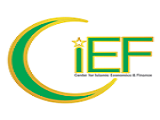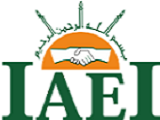Islamic Banking Strategies In Rural Area: Developing Halal Tourism and Enhancing The Local Welfare
Abstract
ABSTRACT
The purpose of this study is to analyze the potential contribution of Islamic banking to development of Halal tourism and the enhancement of local community welfare in rural area.The present study employs a critical analytic approach based on extensive review and discussing the possible contribution of Islamic banking to development of Halal tourism and the local communities in rural area.As discussed in the paper there are some strategies for Islamic banking in the rural area. First, Islamic banking can establish special purpose vehicle to run the microfinance scheme in the rural area in order to minimize the potential risks. Second, some financing mechanisms also can be run by the Islamic banks both sources from internal and external resources, such as participatory model – musyarakah and mudharabah and third parties fund – zakah, infaq, sadaqah and waqf.Last, the branchless banking strategy is also proposed but with a certain intermediations should be firstly done by the Islamic banks, such as social and financial intermediation.
Keywords Indonesia, Islamic Banking, Halal tourism, Local Welfare
Keywords
Full Text:
PDFReferences
REFERENCES
Abdul Aziz, A. H and Salleh, M. S. (2017), “Islamic hospitality with special reference to Malaysia”, Journal of Art, Science and Commerce, Vol. 18 No. 1, pp. 28-34
Ahmad, Norafifah and Haron, Sudin. (2002), “Perceptions of Malaysian Corporate customers towards Islamic banking products and services”. International Journal of Islamic Financial Services. Vol.3 No.4, pp.13-29.
Amer Nordin, N. S and Abdul Rahman, F. (2018), “A critical review of the Muslim-friendly hospitality services standard (MS 2610:2015) in Malaysia”, Proceeding of the 3rd International halal conference 2016, pp. 211-222.
Andriotis, K. (2002) “Scale of hospitality firms and local economic development: evidence from Crete”, Tourism Management, Vol. 23 No. 4, pp. 333-341.
Antara. (2017), “Koperas UMKM NTB serap 1.9 juta pekerja”, available at: https://mataram.antaranews.com/berita/32369/koperasi-umkm-ntb-serap-19-juta-pekerja (accessed 3 June 2018).
Asian Development Bank. (2019), “Povert in Indonesia”, available at: https://www.adb.org/publications/basic-statistics-2019 (accessed 1 May 2019)
Aji, Priasto. (2015), “Summary of Indonesia’s poverty analysis”, ADB papers on Indonesia, available at: https://www.adb.org/sites/default/files/publication/177017/ino-paper-04-2015.pdf
Azmi, F. R., Musa, H., Sihombing, H and Fen, F. S. (2018), “Adoption Factors of halal standards: the Malaysian Perspectives”, Proceeding of the 3rd International halal conference 2016, pp. 315-329.
Balaguer, J. and Cantavella-Jorda, M. (2002), “Tourism as a long-run economic growth factor: the Spanish case”. Applied Economics. Vol. 34 No. 7, pp. 877-884.
Bennett, L., Goldberg, M. and Hunte, P. (1996), ‘‘Ownership and sustainability: lessons on group based financial services from South Asia’’, Journal of International Development, Vol. 8 No. 2, pp. 271-88.
Brida, J. and Pulina, M. (2010), “A literature review on the tourism-led-growth hypothesis”. Working Paper CRENoS. Centre for North South Economic Research, Sardinia.
Canny, I.U. (2013), “An empirical investigation of service quality, tourist satisfaction and future behavioral intensions aong domestic local tourist at Borobudur temple”. International Journal of Trade, Economics and Finance. Vol. 4 No. 2, pp. 86-91.
Croes, R. R. (2006), “A paradigm shift to a new strategy for small island economies: embracing demand side economics for value enhancement and long term economic stability”, Tourism Management, Vol. 27 No.3, pp. 453-465.
Douglass, S.L and Shaikh, M.A. (2004), “Defining Islamic education: differentiation and applications”, Current Issues in Comparative education, Vol. 7 No. 1, pp. 5-18.
Du, D., Lew, A.A. and Ng, P.T. (2016),”Tourism and economic growth”, Journal of Travel Research, Vol.55 No.4, pp. 454-464.
Dusuki, A. W. (2008), “Banking for the poor: the role of Islamic banking in microfinance initiative”, Humanomics, Vol.24 No.1, pp. 49-66.
Edi, B. Q. R and Hadi, S. (2012), “Efektifitas bank perkreditan rakyat dalam rangka membangun ekonomi kerakyatan di daerah pedesaan”, Relasi, Vol. 16 No. 2, pp. 1-21.
El Aswad, El Sayed. (2016), “Hospitality”, In encyclopedia of Islam and the Muslim world 2nd Edition, US: Macmillan Reference.
Farooq, M. O. (2007), “Partnership, equity-financing and Islamic finance: whither profit-loss sharing?”, Review of Islamic Economics, Vol. 11, pp. 67-88.
Farooq, M. O. (2011), “Qard hasan, wadi’ah amanah and bank deposits: applications and misapplication of some concepts in Islamic banking”, Arab Law Quarterly, Vol. 25, pp. 115-146.
Fintechnews. (2018), “World Bank global index: Indonesia leads in financial inclusion progress”, available at: http://fintechnews.sg/19095/indonesia/world-bank-global/index/financial/inclusion/unbanked (accessed 3 March 2019).
Gupta, M. R and Dutta, P. B. (2018), “Tourism development, environmental pollution and economics growth: a theoretical analysis”, The Journal of International Trade and Economics Development, Vol. 27 No. 2, pp. 125-144.
Gytenlberg, J and Remolona, E. M. (2006), ”Securitation in Asia and the pacific: implication for liquidity and credit risks”, BIS Querterly Review, pp, 65-75.
Han, H., Al-Ansi, A., Olya, H. G. T and Kim, W. (2019), “Exploring halal-friendly destination attributes in South Korea: perceptions and behaviors of Muslim travelers toward a non-Muslim destination”, Tourism Management, Vol. 71, pp. 151-164.
Hukum Online. (2017), “Industri perbankan syariah mulai bidik proyek-proyek infrastruktur”, available at: http://www.hukumonline.com/berita/baca/lt58ec822ec5219/industri-perbankan-syariah-mulai-bidik-proyek-proyek-infrastruktur(accessed 3 June 2018).
Kawasan Ekonomi Khusus. (2017),” Emat hotel dibangun di kawasan ekonomi khusus mandalika”, availaible at: http://kek.go.id/berita/2017/04/empat-hotel-dibangun-di-kawasan-ekonomi-khusus-mandalika (accessed 3 June 2018)
Kawata, Y., Htay, S. N. N and Salman, A. S. (2018), “Non-muslims’ acceptance of imported products with halal logo: a case study of Malaysia and Japan”, Journal of Islamic Marketing, Vol. 9 No. 1, pp. 191-203.
Kunova, Marcela. (2017), “Britain has more Islamic banks and lenders than any other western country”,available at: https://www.citywealthmag.com/news/britain-has-more-islamic-banks-and-lenders-any-other-western-country/ (accessed 3 June 2018).
Litvin, S. W and Sok Ling, S. N. (2001), “The destination attribute management model: an empirical application to Bintan, Indonesia”, Tourism Management, Vol. 22 No. 5, pp. 481-492.
MacNeill, T and Wozniak, D. (2018), “The economics, social and environmental impacts of cruise tourism”, Tourism Management, Vol. 66, pp. 387-404.
Milne, S and Ateljevic, I. (2001),”Tourism, economics development and the global-local nexus: theory embracing complexity”, Tourism Geographies, Vol. 3 No. 4, pp. 369-393.
Myers, Thomas. A and Hassanzadeh, Elham. (2013), “The interconnections between Islamic finance and sustainable finance”, available at: http://www.iisd.org/pdf/2013/interconnections_islamic_sustainable_finance.pdf (accessed 3 June 2018).
Na’im, Ainun. (2006), “Special purpose vehicle institutions: their business nature and accounting implications”, Gadjah Mada International Journal of Business, Vol.8 No. 1, pp. 1-19.
Nugrahani, N. (2015),”Lombok named best halal tourism destination”, available at: https://www.thejakartapost.com/news/2015/10/22/lombok-named-best-halal-tourism-destination.html(accessed 3 June 2018).
Republika. (2017), “Pariwisata bangkitkan sektor UMKM NTB”, available at:https://www.republika.co.id/berita/nasional/daerah/17/07/26/otospi368-pariwisata-bangkitkan-sektor-umkm-ntb(accessed 3 June 2018).
Republika. (2018), “Investasi pariwisata Mandalika mencapai Rp 17 triliun”, available at: https://www.republika.co.id/berita/nasional/daerah/18/11/18/pieah5349-investasi-pariwisata-mandalika-mencapai-rp-17-triliun (accessed 25 March 2019).
Republika. (2018), “Mandalika Lombok potensi wisata halal baru di Indonesia”, available at: https://www.republika.co.id/berita/nasional/daerah/18/08/30/pe9tfg399-mandalika-lombok-potensi-wisata-halal-baru-di-indonesia (accessed 25 March 2019)
Republika. (2019), “Indonesia aims to rank first in global halal tourism”, available at: https://en.republika.co.id/berita/en/national-politics/19/02/21/en/national-politics/19/02/15/pmyq8c414-indonesia-aims-to-rank-first-in-global-halal-tourism (accessed 25 March 2019).
Oh, Chi-Ok. (2005), “The contribution of tourism development to economic growth in the Korean economy”, Tourism Management, Vol.26 No. 1, pp. 39-44.
Otoritas Jasa Keuangan (2017), “Strategi nasional literasi keuangan Indonesia”, available at: https://www.ojk.go.id/id/berita-dankegiatan/publikasi/Documents/Pages/Strategi-Nasional-Literasi-Keuangan-Indonesia-(Revisit-2017)-/SNLKI%20(Revisit%202017)-new.pdf
PaoWu, T and Che Wu, H. (2017), ”The influence of international tourism receipts on economic development: evidence from China’s 31 major regions”, Journal of Travel Research, Vol. 57 No. 7, pp. 871-882.
Pusat Kajian Strategis BAZNAZ. (2017). “Outlook zakat Indonesia 2017”, available at: https://www.puskasbaznas.com/images/outlook/OUTLOOK_ZAKAT_2017_PUSKASBAZNAS.pdf
Pratminingsih, S. A., Rudatin, L. C and Rimenta, T. (2014), “Roles of motivation and destination image in predicting tourist revisit intention: a case of Bandung, Indonesia”, International Journal of Innovation, Management and Technology, Vol. 5 No. 1, pp. 19-24.
Purnamasari, F., & Darmawan, A. (2017). Islamic Banking and Empowerment of Small Medium Enterprise. Etikonomi, 16(2), 221-230.
Rosly, S.A and Abu Bakar, M. A. (2003), “Performance of Islamic and mainstream banks in Malaysia”, International Journal of Social Economics, Vol. 30 No. 12, pp.1249-1265.
Safira, Fitri. (2017), “Branchless banking in Indonesia: is it an illusion?”, available at: https://ppm-manajemen.ac.id/blog/artikel-manajemen-18/post/branchless-banking-di-indonesia-sebuah-ilusi-1523 (accessed 3 June 2018).
Salaamgateway. (2017), “How to get halal certificationyou’re your hotel in Indonesia”, available at: https://www.salaamgateway.com/en/story/how_to_get_halal_certification_for_your_hotel_in_indonesia_-SALAAM22032016051009. (accessed 8 June 2018).
Salama, S. (2017), “Indonesia announces 3 new halal tourism packages at the Moscow halal expo”, available at: https://halalfocus.net/indonesia-announces-3-new-halal-tourism-packages-at-the-moscow-halal-expo (accessed 25 March 2019).
Sokhanvar, A., Cifcioglu, S and Javid, Elyeh. (2018), “Another look at tourism-economic development”, Tourism Management Perspectives, Vol. 26, pp. 97-106.
Srihadi, T. F., Hartoyo, H., Sukandar, D and Soehadi, A. W. (2016), “Segmentation of the tourism market for Jakarta: classificasion of foreign visitors’ lifestyle typologies”, Tourism Management Perspective, Vol. 19 No. 1, pp. 32-29.
Stephenson, M. L. (2014), “Deciphering Islamic hospitality: development, challenges and opportunities”, Tourism Management, Vol. 40, pp. 155-164.
SuaraNTB. (2017), “UMKM pariwisata berpotensi topang perekonomian NTB”, available at: http://www.suarantb.com/news/2017/03/16/26974/umkm.pariwisata.berpotensi.topang.perekonomian.ntb. (accessed 8 June 2018).
SuaraNTB. (2017), “Rp 1,3 triliun KUR hanya mengakomodir 0,5 persen umkm NTB”, available at: https://www.suarantb.com/ekonomi.dan.bisnis/2017/01/20459/rp.13.triliun.kur.hanya.mengakomodir.05.persen.umkm.ntb (accessed 8 June 2018).
Sukmana, Raditya and Kassim, S. H. (2010), “Roles of the Islamic banks in the monetary transmission process in Malaysia”, International Journal of Islamic and Middle Eastern Finance and Management, Vol. 3 No. 1, pp. 7-19.
Wannasupuche, W., Othman, M., Che Ishak, A. F., Ungku Zainal Abidin, U. F and Mohammad, S. F. (2019), “A conceptual paper for development of halal food service system in Thailand”, International Journal of Asian Social Science, Vol. 9 No. 1, pp. 96-105.
Wood, R. E. (1984), “Ethnic tourism, the state and cultural change in Southeast Asia”, Annals of Tourism Research, Vol. 11 NO. 3, pp. 353-374.
World Bank (2010), “Improving access to financial services in Indonesia”, available at: http/datatopics.world-bank.org (accessed 25 March 2019).
World Bank. (2011), “Financial Inclusion data for Indonesia”, available at: http/datatopics.world-bank.org/financialinclusion/country/Indonesia (accessed 25 March 2019).
DOI: http://dx.doi.org/10.24042/febi.v4i1.4211
Refbacks
- There are currently no refbacks.
Copyright (c) 2019
Ikonomika : Jurnal Ekonomi dan Bisnis Islam is a Journal of Islamic Economics and Business, Published by the Faculty of Islamic Economics and Business at UIN Raden Intan Lampung Indonesia. This work is licensed under a Creative Commons Attribution-ShareAlike 4.0 International License.






11.png)


